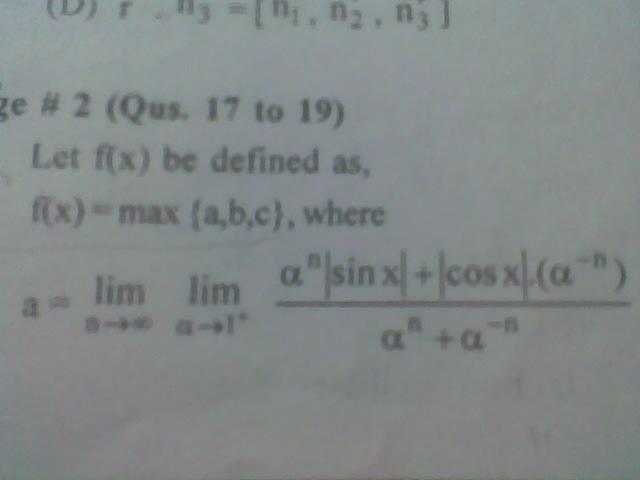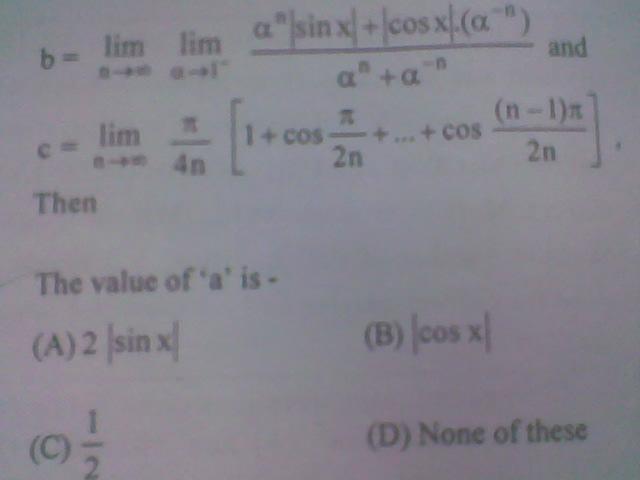this was easy question manipal bhai itna darte kyun ho sawalon se...chak de phatte
34 Answers
Q1)multi ply a^n num and denom.....
U get α^2n/sinx/ + cos x/(α^2n +1)
lim a tends to 1+ and n tends to Infinity means a^2n tends to 1
therefore a={/sinx/+/cosx/}/2
But lim a tends to -1 and n tends to inf. =0
so b=/cosx/
For c use cosθ+cos2θ+cos3θ..... cosnθ= { sin(nθ/2)/son(θ/2)}*cos ((n+1)θ/2)
got it folks.....
but double limit never came in IIT
yaar main darta nahin hoon
read the bolded statement in #5
it was nt very tough aur yeh to nahi likha hai ki dble limit aa nahi sakti may be it start cming frm dis year
do baar limit mat nikalo.....n--->∞ ko uper likh do...and then rest of limit ko solve kar do..
....do baar lt likh dene se question out of syllabus nahi ho jata.
sorry manipal if got offended but i dont think u will be...:) cheers
and richa post how did u solve for c??(weak in trigo)
I am getting this
2b= 2a=|sinx|+|cosx|
Can you confirm the answer powerplay
See the problem here is with the way it is written
IF you have two limits both tending together it is different from
one limit tending after another!
there is a difference in
Lim x->a lim y->b f(x,y)
and
lim x->a, y->b f(x,y)
The question here is the first one...
nishant bhaiya no brackets mention so simultaneous limits they will be . i think i ve done a similar sum time before .
bhai
yeh tuune kya kiya?????
SITE KA NAAM HAI
TARGET IIT
IIT mein tere se aise sawal koi nahi poochega
better not waste 10 ( useful 4 JEE)concepts to make 1
there r 25 years paper available in the markets
u can get a guess about the type of ques they ask
IN MY WHOLE EXPERIENCE OF 2 YEARS WIHT TEACHERS BOOKS AND PAPERS
I HAD NEVER SEEN SUCH TYPE OF PROBLEM
IF SOMEONE CAN SOLVE I WILL BE THANKFUL
richa did u solve for c???...
.....i also got same answers for rest....
19. ans is D but not getting...
how u got ... post naa...
well 17th one is d.



